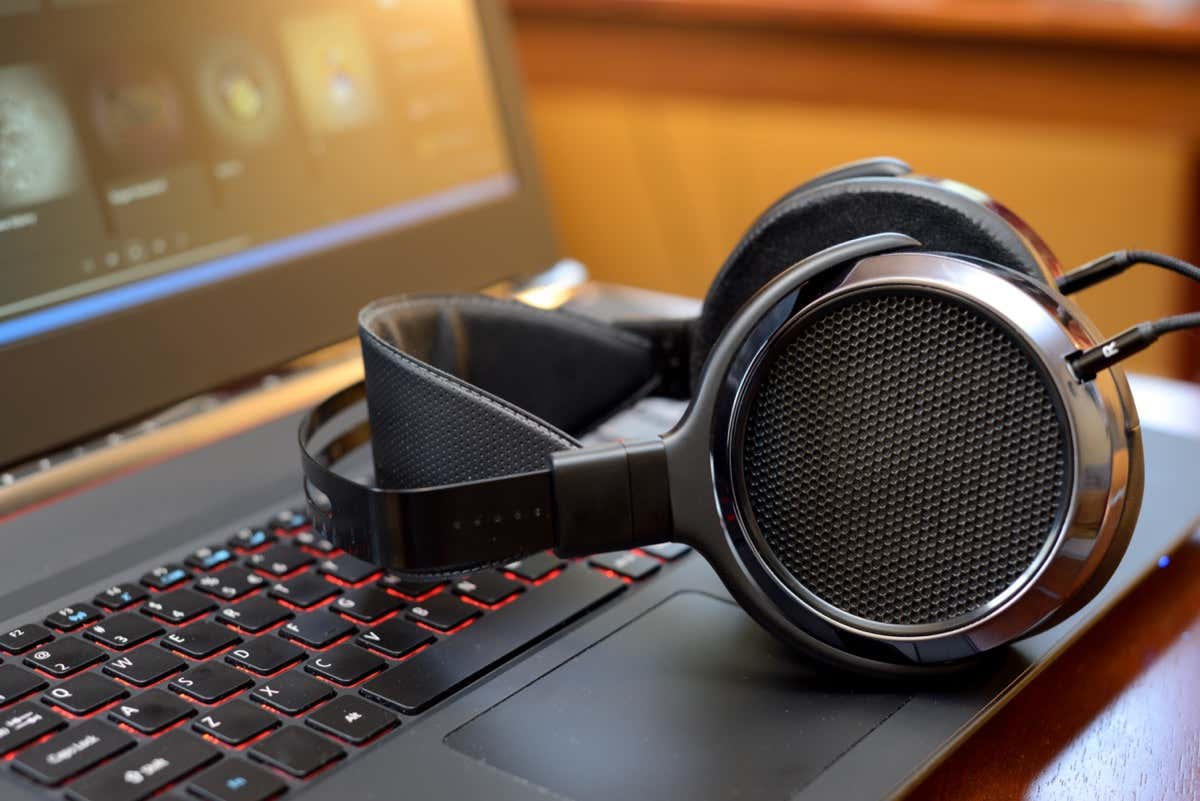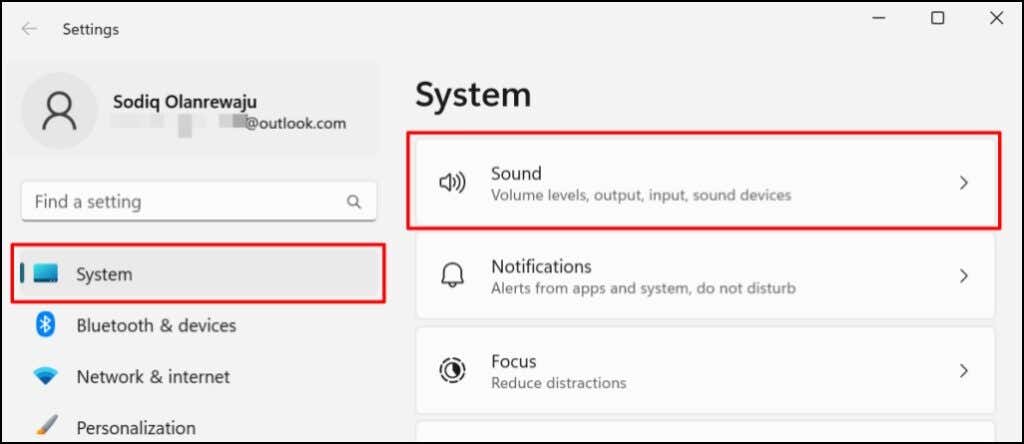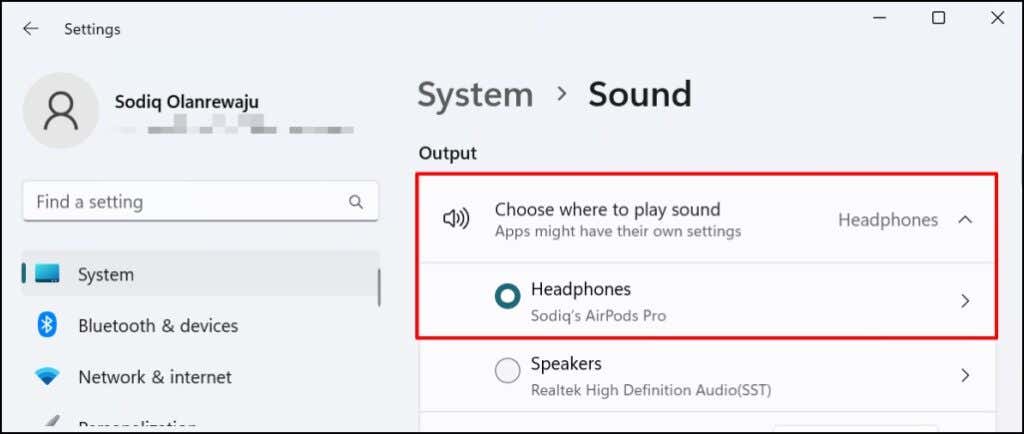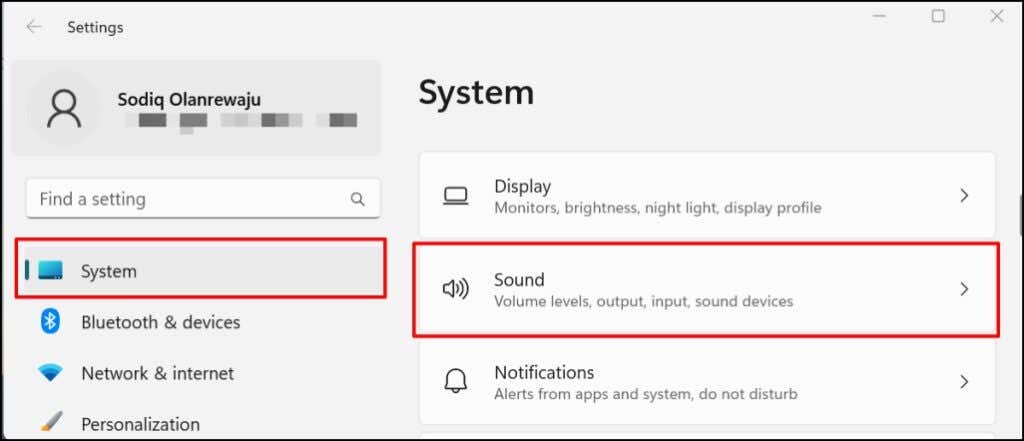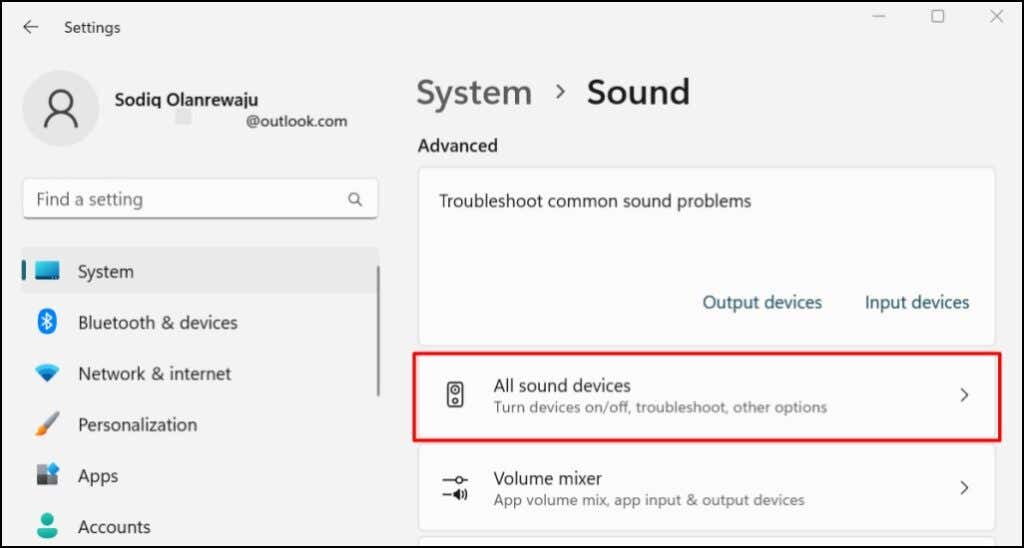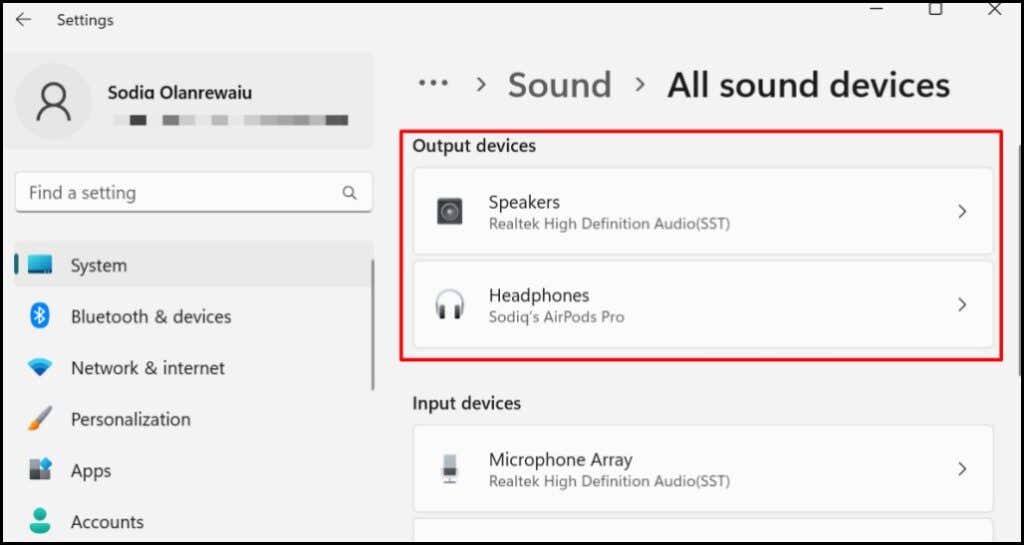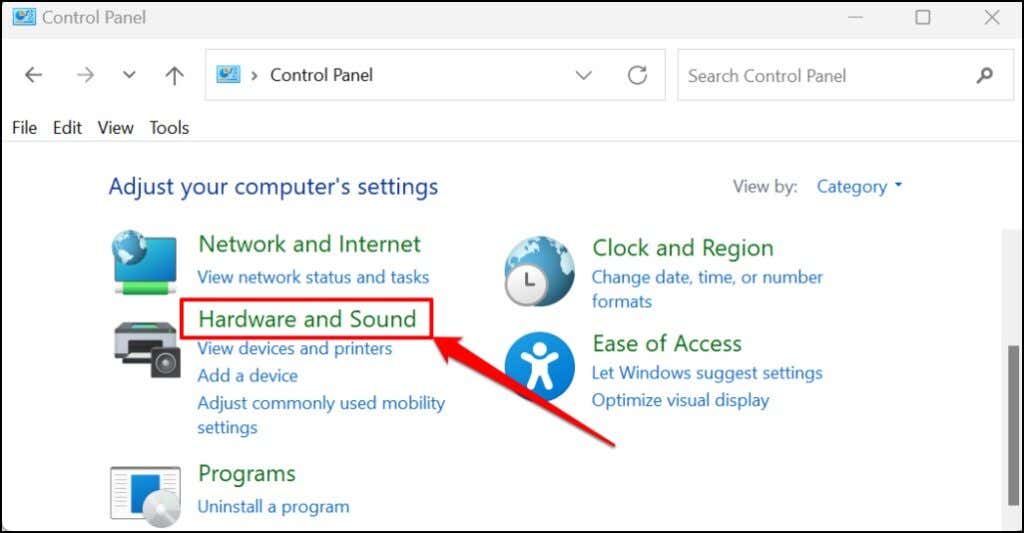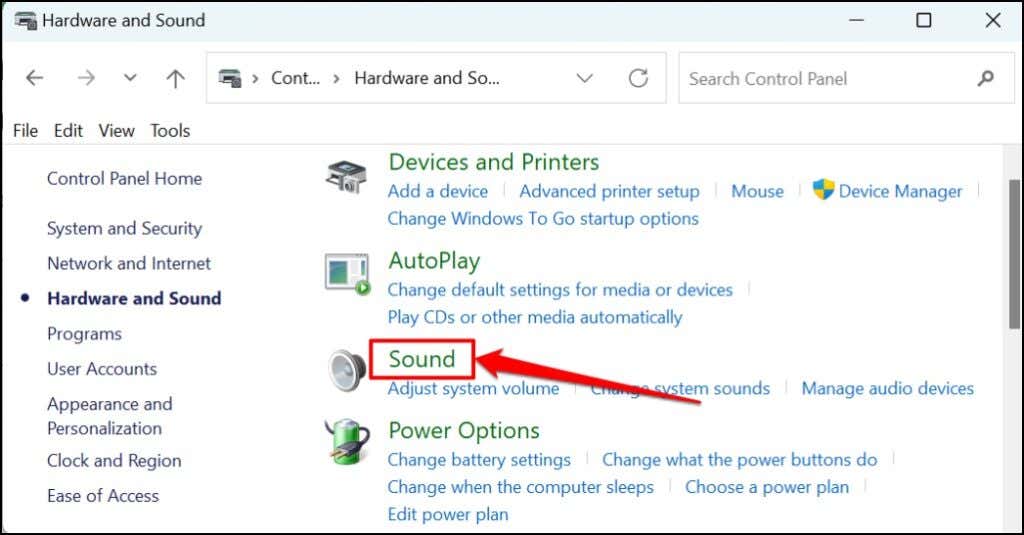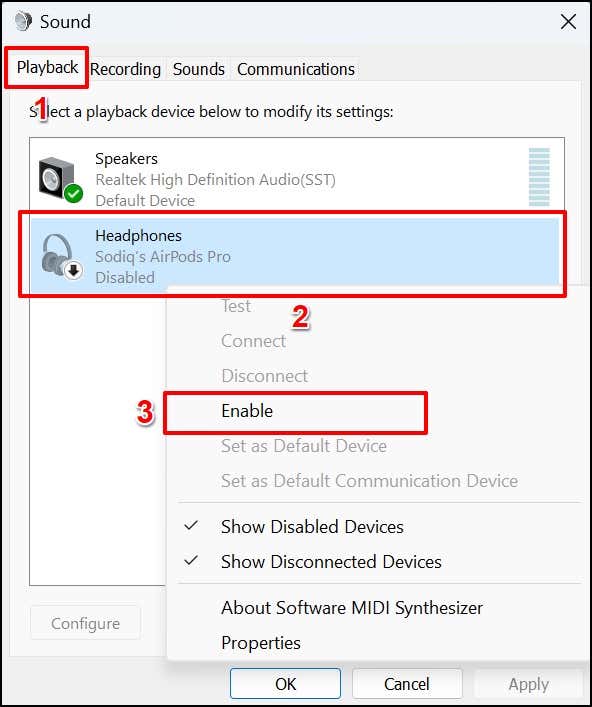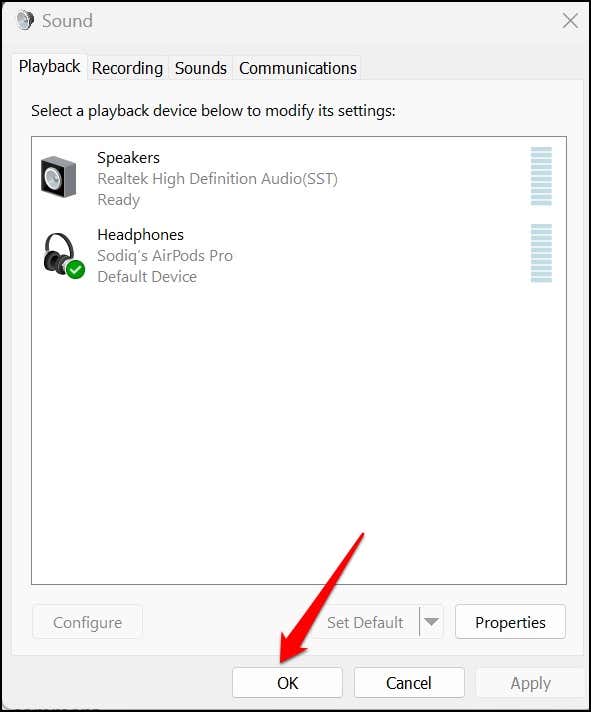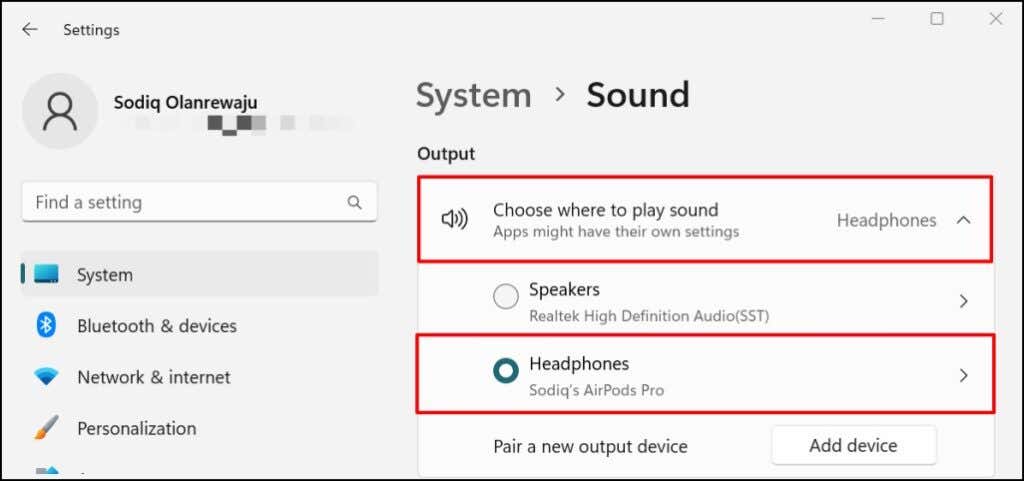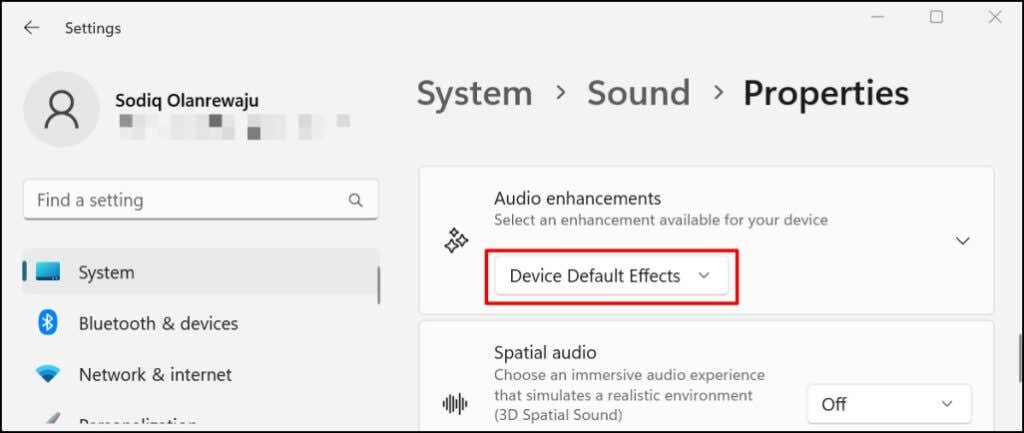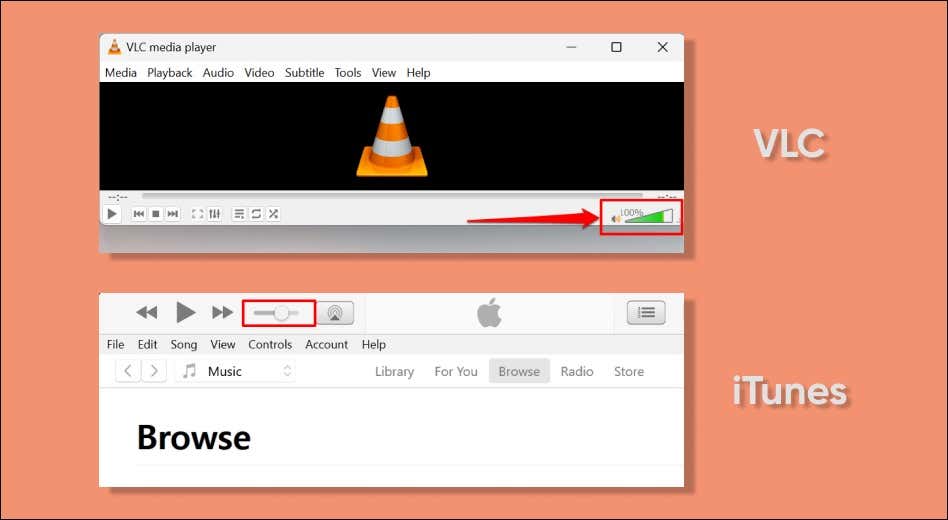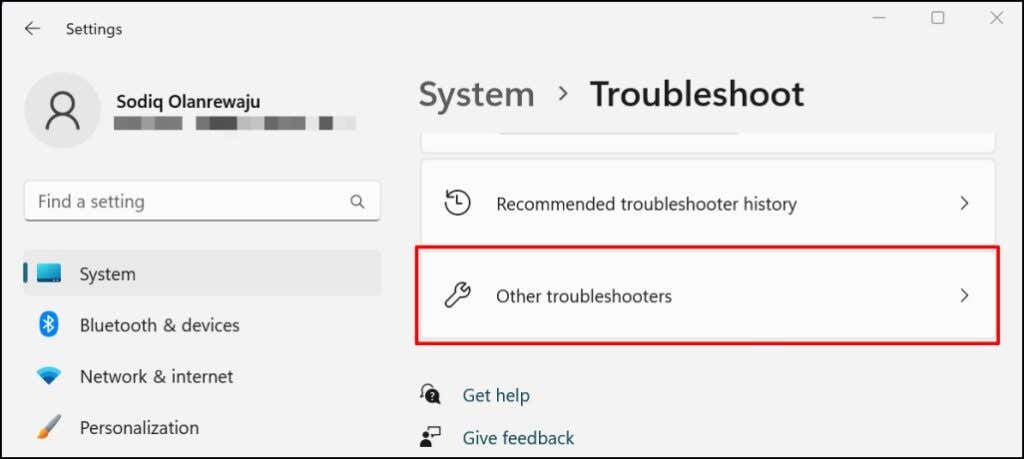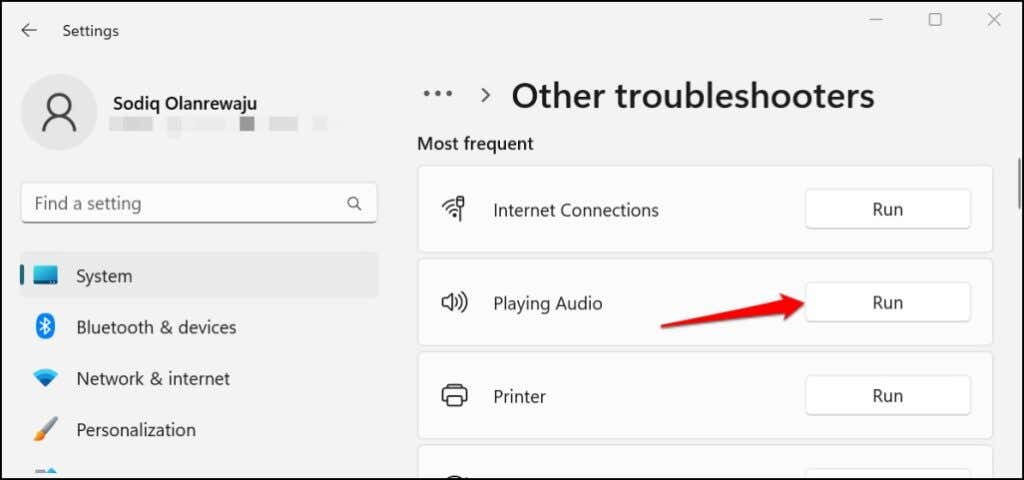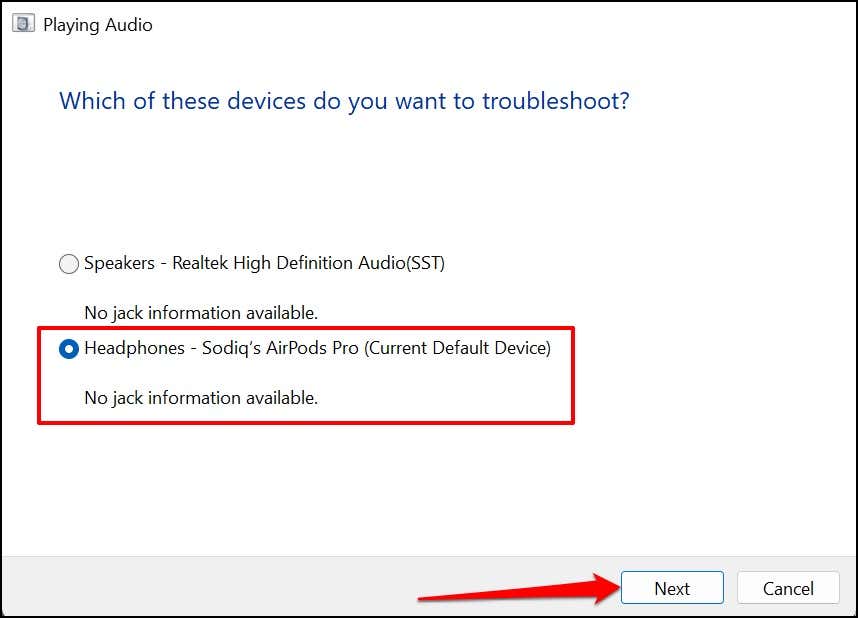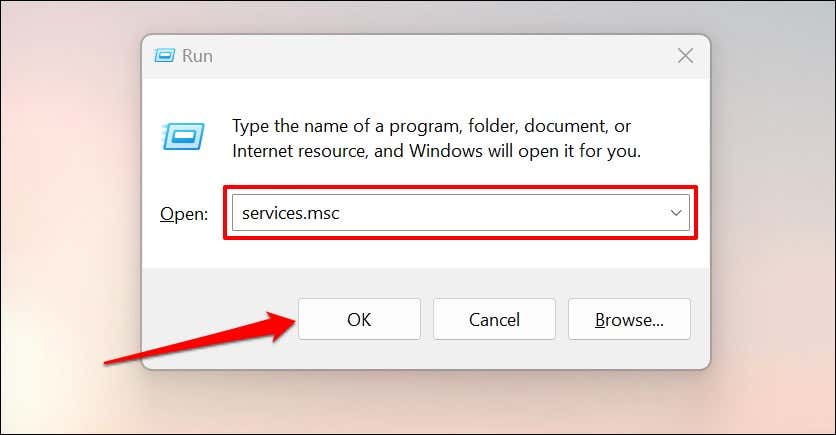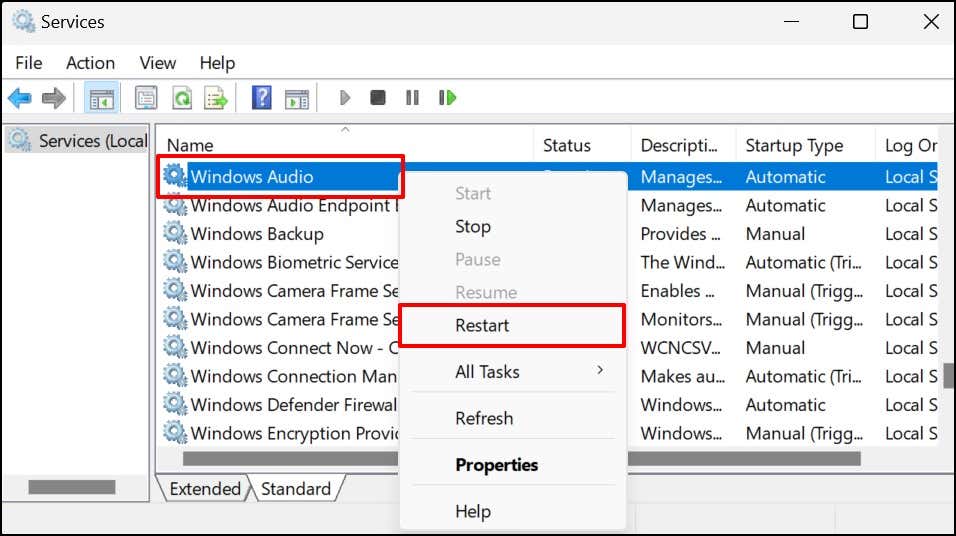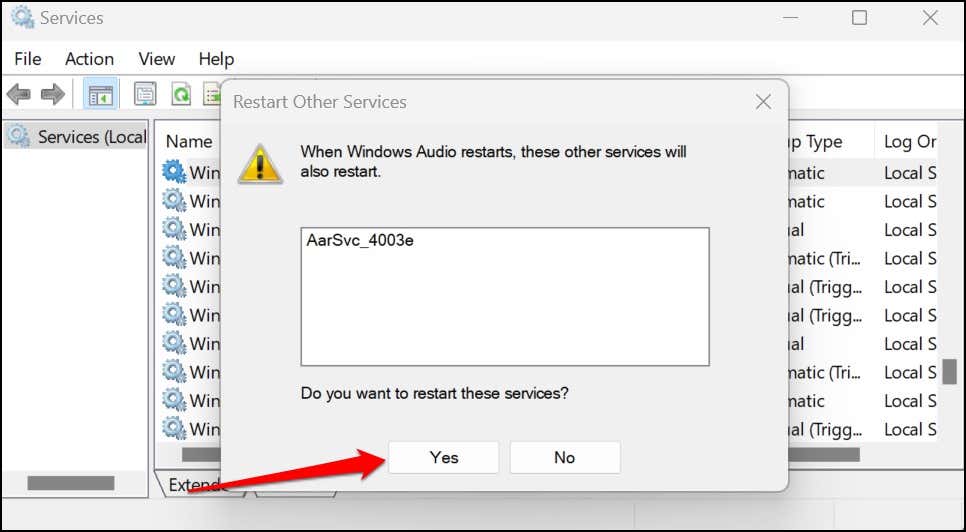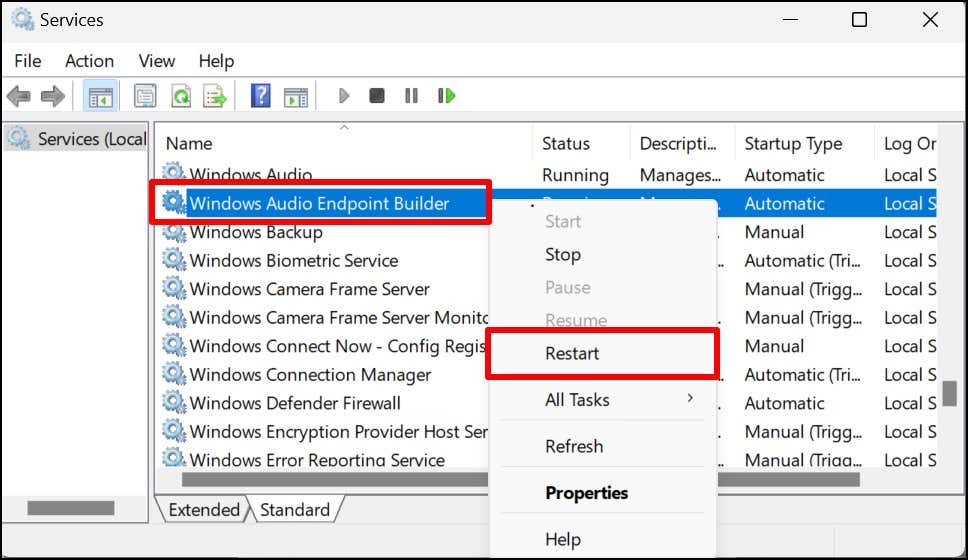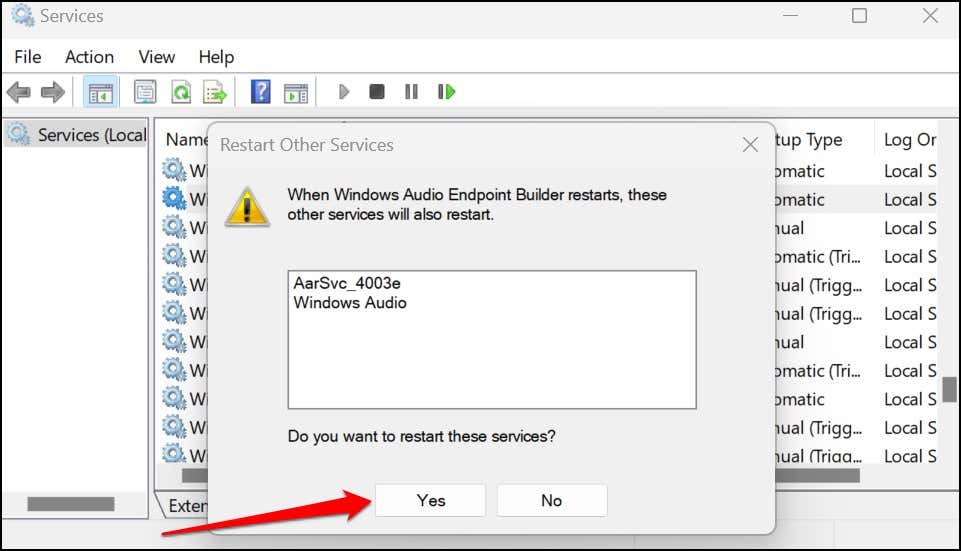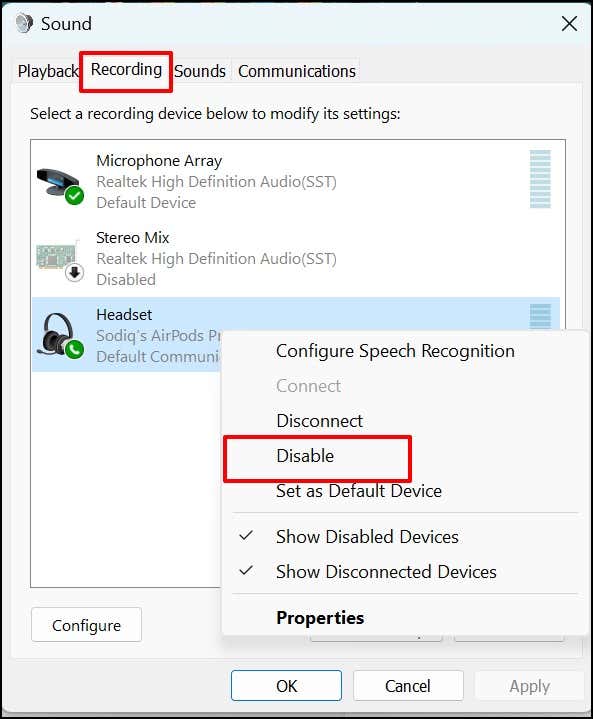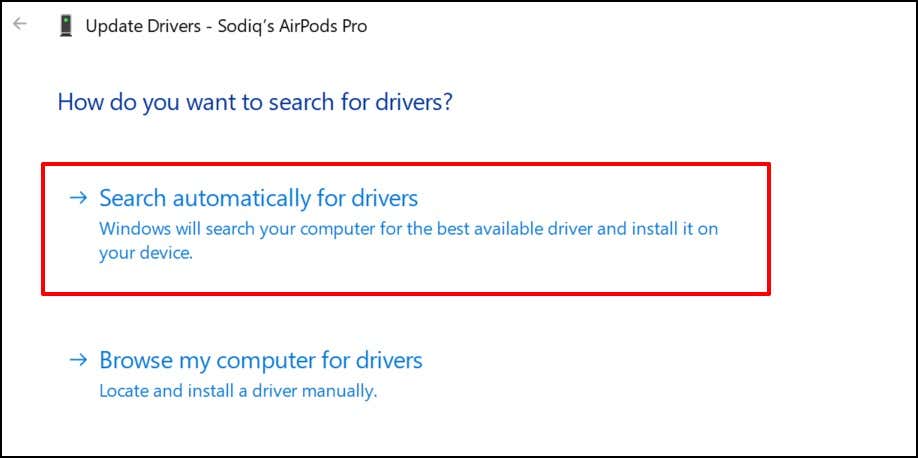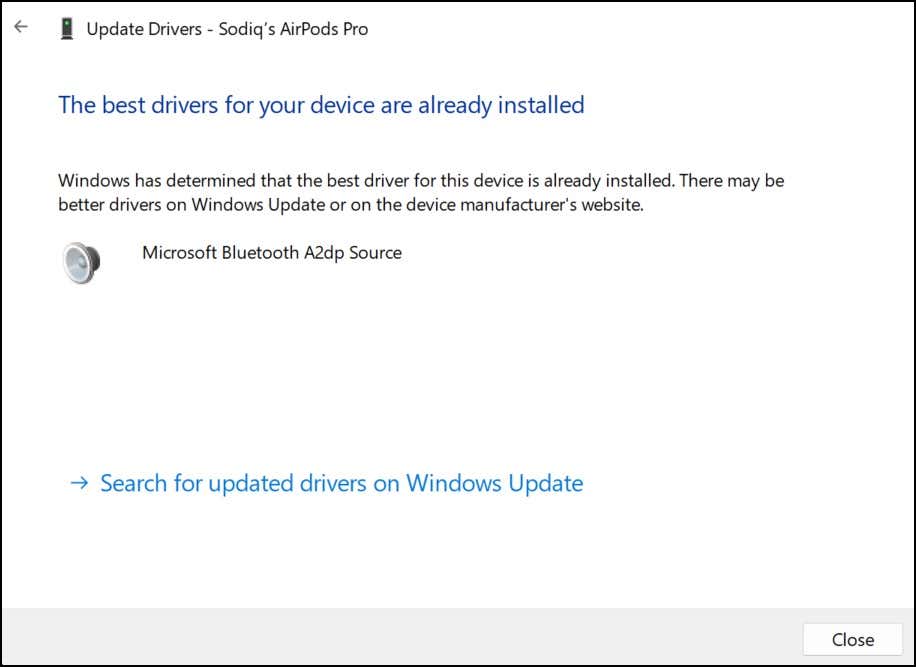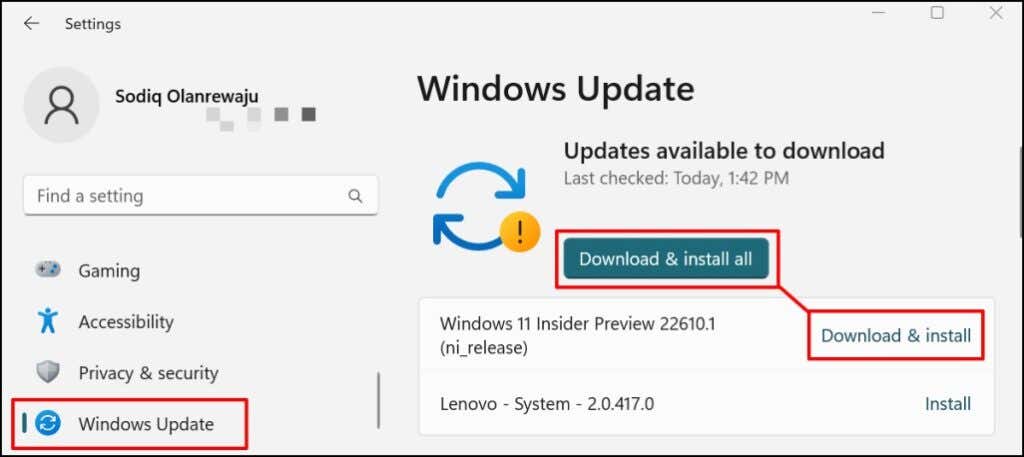If you’re having issues using headphones on your Windows 11 computer, the recommendations in this tutorial will fix the problem. Before anything, verify that your computer isn’t set on mute. Press the volume button to unmute your PC and increase the audio output volume.
Wired headphones or earphones malfunction if they have a loose connection. Ensure your headphones cable is correctly plugged into the headphone jack or USB port. Additionally, remove any dirt, dust, or foreign material in the audio jack. Other factors responsible for headphone failures in Windows include outdated sound drivers, incorrect volume settings, audio enhancement problems, etc. Now, let’s get to the solutions.
1. Make Your Headphones the Primary Playback Device
Windows should automatically route audio to your headphones when you connect them to your computer. If audio keeps playing through the built-in speakers or other devices, make your headphones the primary output device.
- Go to Settings > System and select Sound.
- Expand the “Choose where to play sound” drop-down menu and make your headphones the primary output device.
2. Turn On Your Headphones in Windows
Your headphones may not produce sound output if it’s disabled as an output device. Check your PC’s settings and make sure the headphones are enabled for audio output.
Enable Headphones in Windows 11 Settings
- Open the Settings app, select System on the sidebar, and select Sound.
- Scroll to the “Advanced” section and select All sound devices.
- If your headphones aren’t on the list of output devices, they won’t work in Windows and other apps. Select your headphones to change their audio output settings.
- Check the “Audio” row and select the Allow button to set Windows to recognize your headphones as an output device.
Enable Headphones in Control Panel
- Open the Control Panel and select Hardware and Sound.
- Select Sound.
- Head to the Playback tab, right-click your headphones and select Enable.
- Select OK to save the change and close the window.
Play audio or watch videos in any app and check if your headphones now work.
3. Enable or Disable Audio Enhancements
Windows automatically adds special sound effects to your headphones to enhance audio output. It’s a brilliant feature, but it affects the performance of some headphones models. Disable audio enhancement and check if that gets your headphones working again.
Turning on audio enhancement worked the magic for some Windows 11 users. If “Audio enhancements” is disabled on your PC, turn it on and check if that resolves the problem.
- Go to Settings > System > Sound > Choose where to play sound and select the problematic headphones.
- Scroll to the “Audio enhancements” section and select the Device Default Effects button.
- Select Off to disable all audio enhancements applied to your headphones.
4. Enable Mono Audio
Mono audio is a Windows feature that combines audio output from your headphones into a single channel. Mono audio improves your headphones sound quality and makes it easier to hear.
Enable mono audio if your headphones produce crackling noises or fail to produce any sound at all.
Go to Settings > System > Sound and toggle on Mono audio.
5. Adjust In-App Volume Settings
Sometimes, the app(s) playing audio could be the problem, not your headphones. Some media players (iTunes and VLC, for example) have built-in volume controllers independent of your PC’s output volume. Check your app’s volume control or settings and ensure its audio output isn’t mute or set to the lowest level.
We also recommend testing your headphones on multiple apps. If your headphones don’t work on a specific app, close and reopen the app, and try again. Updating the app might also fix the problem.
6. Run Audio Troubleshooter
The Windows audio troubleshooter can diagnose and fix problems with your headphones. Connect the headphones to your computer and follow the steps below.
- Head to Settings > System and select Troubleshoot.
- Select Other troubleshooters.
- Click on the Run button next to “Playing Audio.”
- Select your headphones on the list of audio devices and select Next to proceed.
The troubleshooter will check for potential issues and recommend possible solutions. On our test computer, for instance, the troubleshooter recommended turning off audio enhancement.
7. Restart Windows Audio Services
“Windows Audio” and “Windows Audio End Point Builder” are system services that power audio devices on Windows computers. Your headphones won’t work if one or both of these services are unresponsive or disabled.
Restarting both services could fix problems with wired and wireless headphone issues in Windows.
- Press the Windows key + R, type services.msc in the Run box, and select OK.
- Locate Windows Audio, right-click the service, and select Restart.
- Select Yes on the confirmation prompt.
- Do the same for the Windows Audio Endpoint Builder. Right-click the service and Restart.
- Select Yes on the confirmation prompt.
Close the Windows Services window, play an audio or video file, and check if your headphones now work correctly.
8. Remove Headphones As Recording Device
Some headphone models won’t work in Windows 11 if they’re used as a recording device. Some Windows 11 users got their headphones working by disabling it as a recording device.
Note: Windows will capture audio through your PC’s built-in microphone (or an external mic) when you disable your headphones’ recording functionality.
- Go to Settings > System > Sound and select More sound settings.
- Head to the “Recording” tab, right-click your headphones and select Disable.
- Select OK to save the change.
9. Uninstall or Update Audio Drivers
Headphones will malfunction if your computer’s audio drivers are bug-ridden or outdated. Connect your computer to the internet and update its audio driver to the latest version.
- Right-click the Start Menu (or press Windows key + X) and select Device Manager in the Quick Access menu.
- Expand the Sound, video and game controllers category, right-click the headphones’ driver, and select Update driver.
- Select Search automatically for drivers.
Windows searches the internet and your computer for new versions of your headphones’ driver. Close the window and uninstall the driver (see step #4) if the Device Manager says it’s up-to-date. Windows will automatically reinstall a fresh copy of the sound driver when you restart your PC.
- Right-click the driver and select the Uninstall device option.
- Select Uninstall and restart your computer when the Device Manager removes the driver from your computer.
We also recommend visiting your headphones manufacturer’s website to check if there’s a driver update for your headphone model.
10. Update Windows
Windows Updates sometimes contain new audio driver versions. So, updating your PC’s operating system and installing build releases could fix your headphone’s audio quality and performance.
Go to Settings > Windows Update and select Download & install all.
Fix Up Your Headphones
High-end Bluetooth headphones, headsets, and earphones can malfunction due to outdated firmware. Hardware-related damage could be another reason why your headphones don’t work. Update your headphone’s firmware, reset it to factory settings, or contact the manufacturer for support if the problem persists.
